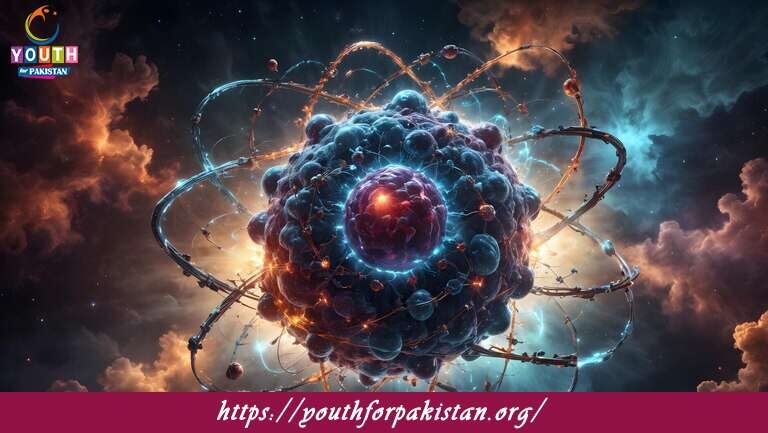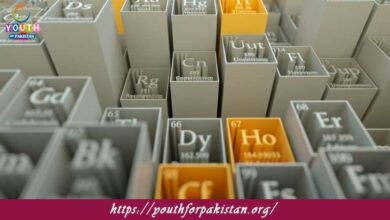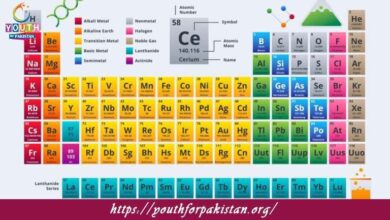12th Class Physics Chapter 21 Quiz with Answers

“12th Class Physics Chapter 21 Quiz: Nuclear Physics” exposes students to the exciting field of nuclear reactions, properties of atomic nuclei, and the applications in the domain of nuclear energy. This chapter has great importance in the MDCAT exam and also covers basics such as nuclear decay, nuclear reactions, and the concept of radioactivity. The idea is to understand these basic concepts to crack the MDCAT exam. You can attempt our MDCAT Quiz for this chapter to assess knowledge and prepare adequately for the actual exam questions.
Introduction to Nuclear Physics
The chapter introduces nuclear physics as the study of atomic nuclei, their properties, and behavior during different nuclear processes. Students will learn that the nucleus of an atom is composed of protons and neutrons, collectively referred to as nucleons. This chapter will look into the forces that hold the nucleus together, the concept of nuclear binding energy, and how the strong nuclear force plays a very important role in stabilizing the nucleus. Nuclear physics is important in the study of phenomena such as radioactivity, nuclear fission, and nuclear fusion.
Nuclear Forces and Nuclear Stability
The first few topics in this chapter deal with the study of nuclear forces. The strong nuclear force, which is responsible for holding the nucleons together, is a short-range force that acts between protons and neutrons in the nucleus. The chapter describes how the nuclear force overcomes the repulsive electrostatic force between positively charged protons to keep the nucleus stable. Students will also delve into the concept of nuclear stability and the factors that determine whether a nucleus is stable or unstable. The concept of neutron-to-proton ratio is very important in understanding how isotopes of elements behave.
Radioactivity and Types of Radiation
The chapter addresses radioactivity, which is the spontaneous emission of radiation from an unstable nucleus. It describes the three main types of radioactive decay:
Alpha decay: This type of decay involves the emission of an alpha particle from an unstable nucleus. An alpha particle is basically a cluster of two protons and two neutrons. The emission of an alpha particle reduces the atomic number by 2 and the mass number by 4.
Beta decay: In beta decay, a neutron in the nucleus transforms into a proton, emitting an electron (beta particle) and an antineutrino. This process increases the atomic number by 1 but does not change the mass number.
Gamma decay: Gamma radiation is a stream of high-energy photons (gamma rays) emitted from the nucleus after a process of radioactive decay. Unlike alpha and beta radiation, gamma rays do not change either the atomic number or the mass number of the nucleus; they just carry away excess energy.
The chapter also talks about half-life: the time required for half of the radioactive nuclei in a sample to decay. It is important to understand half-life to determine the stability of a radioactive isotope and its various applications, including radiometric dating.
Nuclear Fission and Nuclear Fusion
A major emphasis of this chapter is on the study of nuclear fission and nuclear fusion, the two most prominent nuclear reactions that give off energy.
Nuclear fission: This is the process in which a heavy nucleus, for example, uranium-235, splits into two smaller nuclei with the release of a lot of energy and extra neutrons. These released neutrons may create a chain reaction; hence, nuclear fission becomes self-sustaining. Fission is the basis of nuclear reactors and atomic bombs.
Nuclear fusion: In contrast to fission, nuclear fusion involves the combination of two light nuclei, like hydrogen isotopes, into a heavier nucleus. The process of fusion releases an immense amount of energy and is what powers stars—our Sun being no exception. On the plus side, fusion is a very clean source of energy, but getting the extremely high temperatures and pressures needed for the actual fusion reaction rates on Earth remains a significant scientific challenge.
The chapter shows how E = mc², Einstein’s famous equation, relates the energy released in both fission and fusion to the mass defect or mass difference between the reactants and the products. In these reactions, energy is released as mass is converted to energy.
Applications of Nuclear Physics
The chapter also discusses the applications of nuclear physics in various fields. Some of the key applications include:
Nuclear power generation: The process of nuclear fission is used in nuclear reactors to generate electricity. Students will learn how controlled fission reactions in reactors release energy that heats water to produce steam, which drives turbines and generates electricity.
Medical Applications: Radioisotopes are employed in medical diagnosis and treatment on a large scale. For instance, radiotherapy uses ionizing radiation to treat cancer, and a PET scan relies on radioactive isotopes for producing images of the body.
Nuclear weapons: This chapter makes mention of atomic and hydrogen bomb development based on the principles of nuclear fission and fusion, respectively. The devastating effects of these weapons in some historical events are brought forth before the students.
Nuclear Reactions and Nuclear Energy
Nuclear reactions are discussed in some detail, focusing on how the reactions—such as fission and fusion—release enormous amounts of energy compared with chemical reactions. The chapter further discusses nuclear energy: how the energy from nuclear reactions is taken out, problems of nuclear waste disposal, and safety in nuclear reactors. This also examines how nuclear fuel cycles work and potential benefits and risks with nuclear power as a sustainable source of energy.
MDCAT Quiz: Test Your Knowledge of Nuclear Physics
Our MDCAT Quiz for Chapter 21 will test your understanding of key concepts such as radioactivity, nuclear fission, nuclear fusion, nuclear stability, and applications of nuclear physics. This quiz is designed to help you assess your knowledge and prepare effectively for the MDCAT exam.
- Test Name: 12th Class Physics Chapter 21 Quiz
- Type: Quiz Test
- Total Questions: 30
- Total Marks: 30
- Time: 30 minutes
Note: Answer of the questions will change randomly each time you start the test, once you are finished, click the View Results button.
Free Flashcards for Nuclear Physics
Reinforce your learning with these free flashcards for Chapter 21. The flashcards cover key topics such as alpha decay, beta decay, gamma radiation, nuclear reactions, and nuclear energy. Flashcards are an excellent way to quickly revise and memorize key definitions and formulas during your MDCAT preparation.
Experience the real exam environment with our expertly designed collection of over 25,000 MCQs MDCAT Mock Tests.






